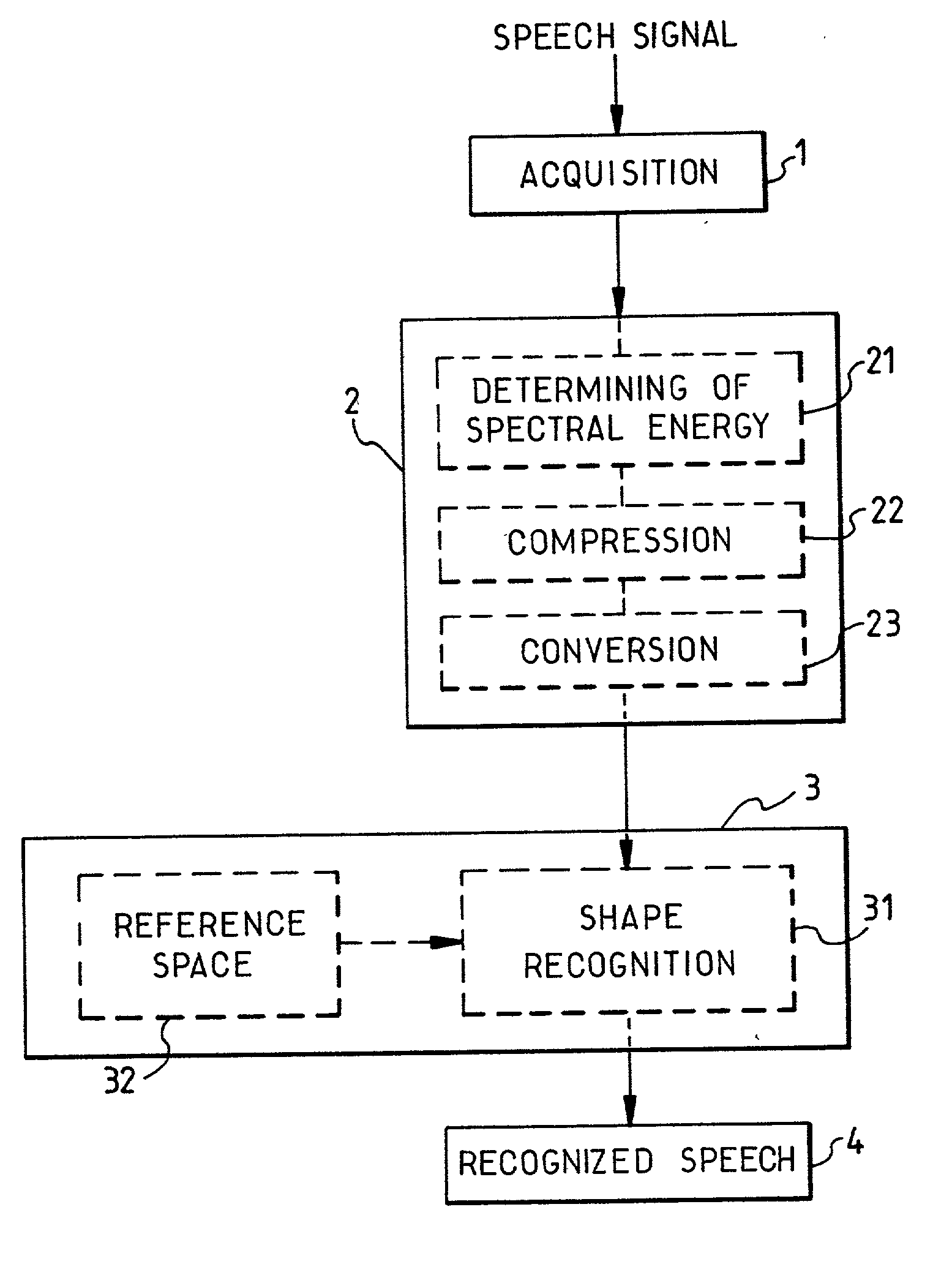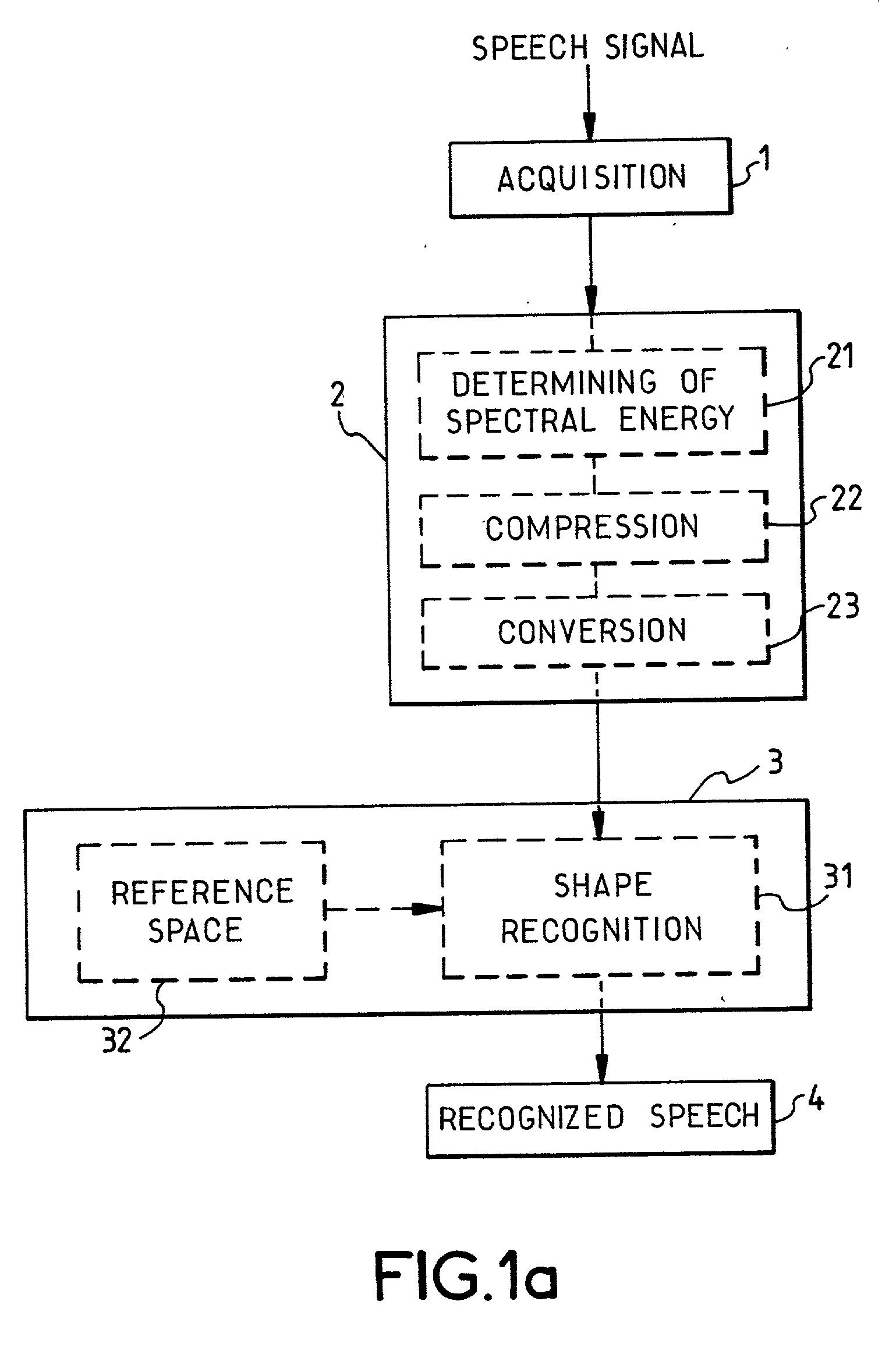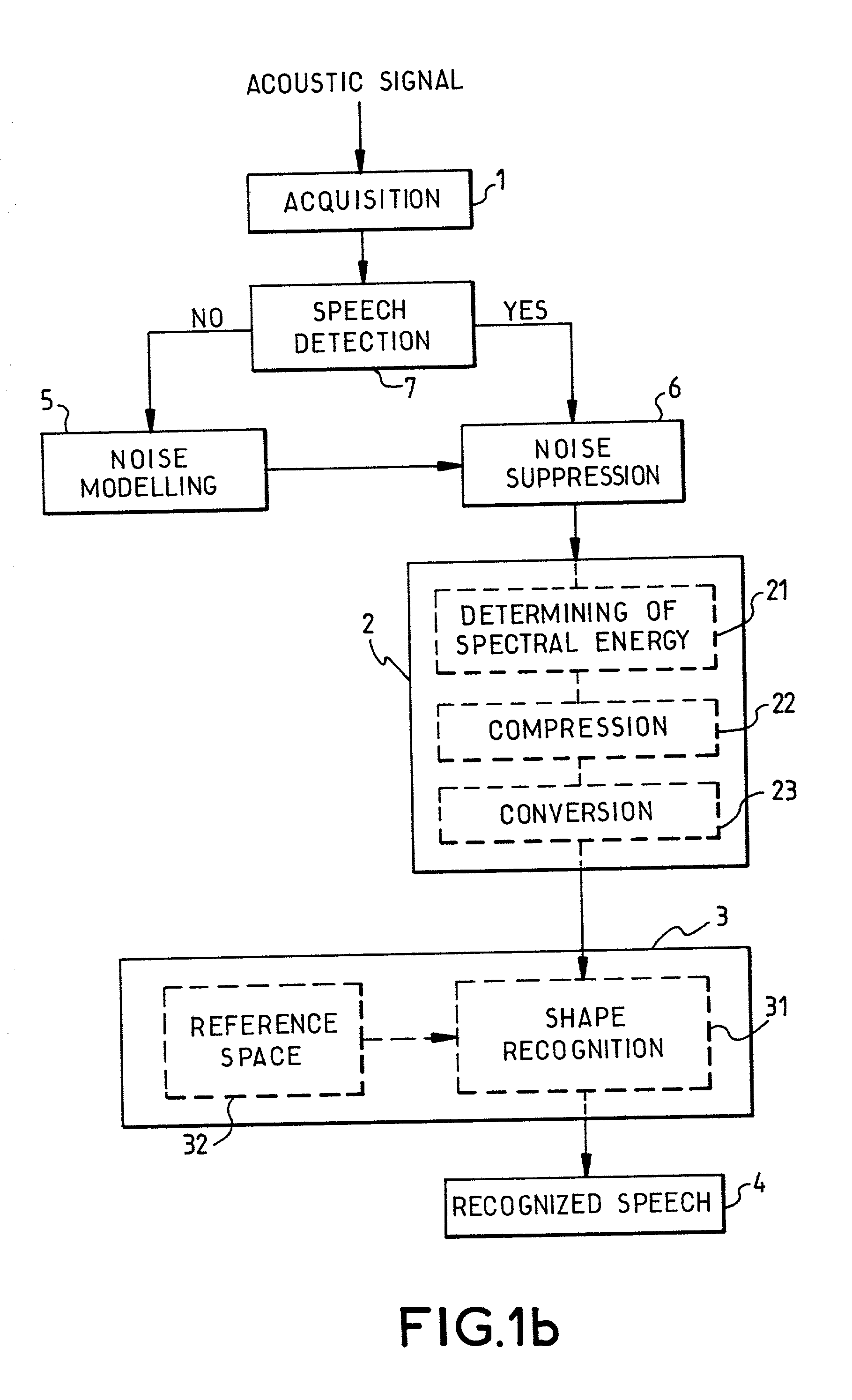Method and device for voice recognition in environments with fluctuating noise levels
a technology of environment and noise level, applied in the field of voice recognition, can solve the problems of loss of voice recognition resolution, loss of recognition, and loss of recognition, and achieve the effect of increasing the loss of recognition
- Summary
- Abstract
- Description
- Claims
- Application Information
AI Technical Summary
Problems solved by technology
Method used
Image
Examples
Embodiment Construction
[0066] We shall now refer to FIG. 2 which represents an exemplary voice-recognition system according to the invention. The voice-recognition system referenced 100 receives a temporal acoustic signal at input. This temporal acoustic signal is formed, at least at times, by a useful signal, the speech being sought, to which there is added a noise signal, noise alone or speech alone. FIGS. 1a, 1b show an acquisition unit 1 that receives the acoustic signal, digitizes it by sampling and subdivides it into frames of a plurality of samples. A first module 7, that is standard per se, receives the frames and discriminates between the useful signal and the noise signal in their acoustic signal. The discrimination between speech and noise is a standard and well-known signal-processing operation. Various methods are known and they rely on the following observations. The noise and the speech are superimposed in terms of energy so that an acoustic signal containing speech and ambient noise contai...
PUM
 Login to View More
Login to View More Abstract
Description
Claims
Application Information
 Login to View More
Login to View More - R&D
- Intellectual Property
- Life Sciences
- Materials
- Tech Scout
- Unparalleled Data Quality
- Higher Quality Content
- 60% Fewer Hallucinations
Browse by: Latest US Patents, China's latest patents, Technical Efficacy Thesaurus, Application Domain, Technology Topic, Popular Technical Reports.
© 2025 PatSnap. All rights reserved.Legal|Privacy policy|Modern Slavery Act Transparency Statement|Sitemap|About US| Contact US: help@patsnap.com



